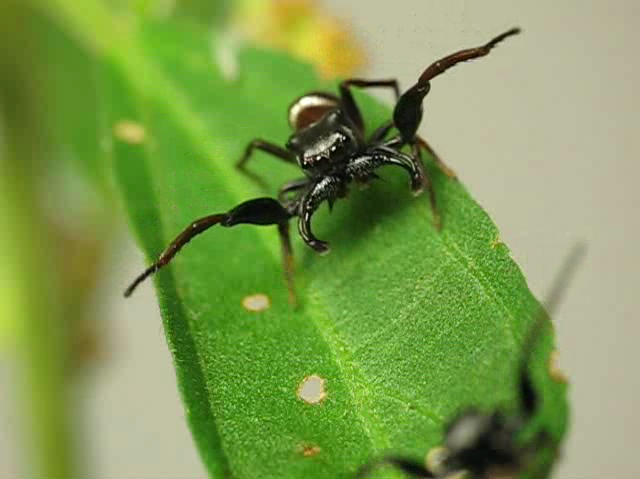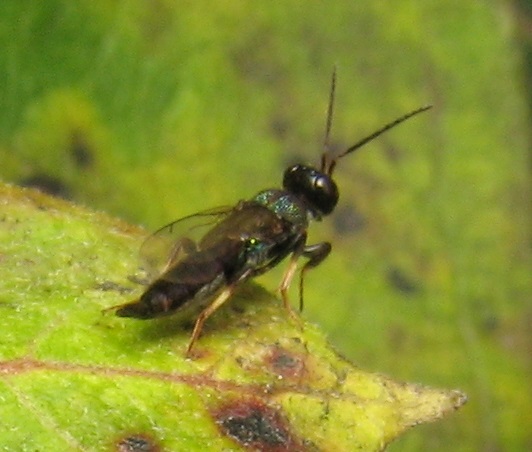|
Anastatus Disparis
''Anastatus disparis'' is a species of wasp, and an egg parasitoid. Hosts include ''Lymantria dispar'' and ''Antheraea pernyi''. The species is sexually dimorphic, with 630 sex specific genes. Females have 11 antennal subsegments, whereas males have 8. Females only mate once, and males are significantly shorter lived than females, engaging in agonistic behavior Agonistic behaviour is any social behaviour related to fighting, which can include aggressive behaviour, but also threats, displays, retreats, placation, and conciliation. The term "agonistic behaviour" was first defined and used by J.P. Scott .... References Eupelmidae Biological pest control wasps {{Chalcidoidea-stub ... [...More Info...] [...Related Items...] OR: [Wikipedia] [Google] [Baidu] |
Lymantria Dispar Dispar
''Lymantria dispar dispar'', commonly known as the gypsy moth, European gypsy moth, LDD moth, or (in North America) North American gypsy moth or spongy moth, is a species of moth in the family Erebidae. It has a native range that extends over Europe and parts of Africa, and is an invasive species in North America. Its larvae are polyphagous, consuming the leaves of over 500 species of trees, shrubs and plants. In its invasive range it is classified as a pest, notably one of the most destructive pests of hardwood trees in the Eastern United States. It is listed as one of the 100 most destructive invasive species worldwide. Taxonomy Carl Linnaeus first described the species as ''Phalaena'' 'Bombyx''''dispar'' in 1758. The subject of classification has changed throughout the years, resulting in confusion surrounding the species' taxonomy. This caused many references to describe this one species in different ways. The family has jumped between Lymantriidae, Noctuidae and Erebida ... [...More Info...] [...Related Items...] OR: [Wikipedia] [Google] [Baidu] |
Antheraea Pernyi
''Antheraea pernyi'', the Chinese oak tussar moth, Chinese tasar moth, or temperate tussar moth, is a large moth in the family Saturniidae. The species was first described by Félix Édouard Guérin-Méneville in 1855. '' Antheraea roylei'' is an extremely close relative, and the present species might actually have evolved from ancestral ''A. roylei'' by chromosome rearrangement. They are originally from southern China. Used for tussar silk production, they have been distributed more widely across subtropical and tropical Asia. Unlike the domestic silk moth which is entirely dependent on human care, tussah silk moths can survive in the wild if they escape from captivity; small local populations of such feral stock may thus occasionally occur. The colour and quality of the silk depends on the climate and soil. This is one of the major producers of tussar silk. It was of commercial importance during the Han dynasty and early Three Kingdoms era, about 200 BC to 250 AD. More recent ... [...More Info...] [...Related Items...] OR: [Wikipedia] [Google] [Baidu] |
Sexually Dimorphic
Sexual dimorphism is the condition where sexes of the same species exhibit different Morphology (biology), morphological characteristics, including characteristics not directly involved in reproduction. The condition occurs in most dioecy, dioecious species, which consist of most animals and some plants. Differences may include secondary sex characteristics, size, weight, color, markings, or behavioral or cognitive traits. Male-male reproductive competition has evolved a diverse array of sexually dimorphic traits. Aggressive utility traits such as "battle" teeth and blunt heads reinforced as battering rams are used as weapons in aggressive interactions between rivals. Passive displays such as ornamental feathering or song-calling have also evolved mainly through sexual selection. These differences may be subtle or exaggerated and may be subjected to sexual selection and natural selection. The opposite of dimorphism is ''monomorphism'', when both biological sexes are phenotype, ... [...More Info...] [...Related Items...] OR: [Wikipedia] [Google] [Baidu] |
Agonistic Behavior
Agonistic behaviour is any social behaviour related to fighting, which can include aggressive behaviour, but also threats, displays, retreats, placation, and conciliation. The term "agonistic behaviour" was first defined and used by J.P. Scott and Emil Fredericson in 1951 in their paper "The Causes of Fighting in Mice and Rats" in ''Physiological Zoology.'' Agonistic behaviour is seen in many animal species because resources including food, shelter, and mates are often limited. Some forms of agonistic behaviour are between contestants who are competing for access to the same resources, such as food or mates. Other times, it involves tests of strength or threat display that make animals look large and more physically fit, a display that may allow it to gain the resource before an actual battle takes place. Although agonistic behaviour varies among species, agonistic interaction consists of three kinds of behaviours: threat, aggression, and submission. These three behaviours ar ... [...More Info...] [...Related Items...] OR: [Wikipedia] [Google] [Baidu] |
Eupelmidae
Eupelmidae is a family of parasitic wasps in the superfamily Chalcidoidea. The larvae of the majority are primary parasitoids, commonly on beetle larvae, though many other hosts are attacked, including spiders. Details of the life history varies considerably (e.g., some attack eggs and others are hyperparasites). They are found throughout the world in virtually all habitats. Description They are somewhat variable in appearance, though a fair number of species are relatively easy to separate from other Chalcidoidea by the possession of a medially concave mesonotum. They also have the unusual tendency to arch the body strongly upwards when dead, with the head and metasoma The metasoma is the posterior part of the body, or tagma (biology), tagma, of arthropods whose body is composed of three parts, the other two being the prosoma and the mesosoma. In insects, it contains most of the digestive tract, respiratory sy ... often nearly touching above the thorax.Gibson, G. A. (1986). ... [...More Info...] [...Related Items...] OR: [Wikipedia] [Google] [Baidu] |



